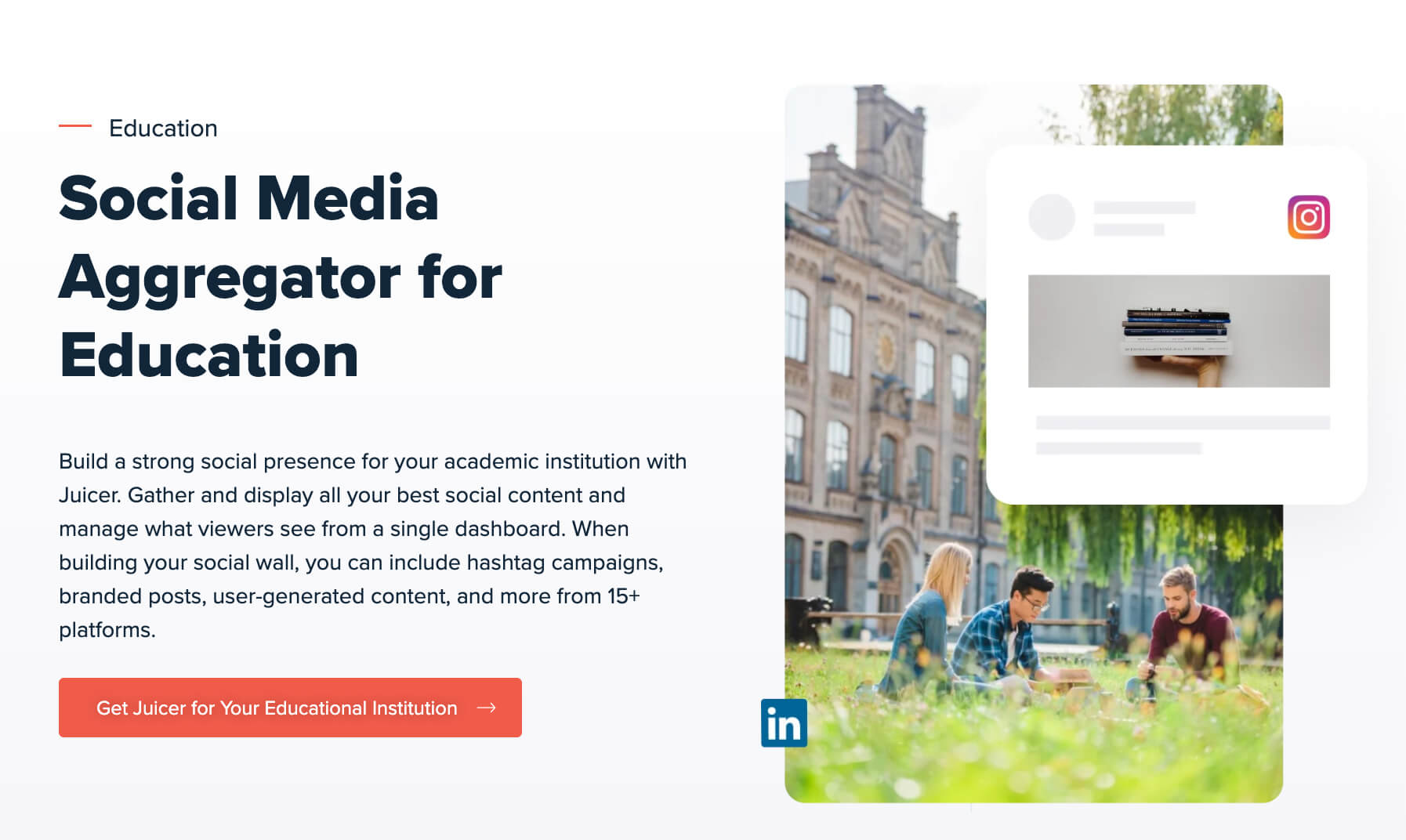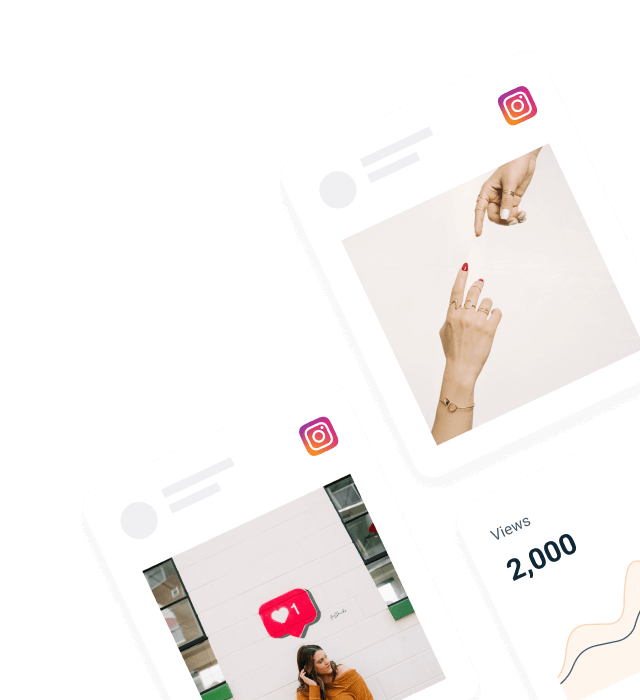5 Ways You Should Be Using Social Media for Schools
Running social media for schools? You’re probably juggling multiple channels to connect with students, parents, alumni, and your local community. Whether you are at a private or public school, you need effective plans that really work. Social media is a powerful tool for creating stronger school communities and informing everyone.
We’ve looked at how successful educational institutions use social media and picked up some tips that you can put into action right away. Schools are finding it challenging to deal with social media, but by having a strategy and the right tools, you can make it a worthwhile asset to your whole school community.

1. Engage With Your School’s Potential Student Audience
As of 2023, 3.8 billion people use social media around the globe, and this gives you many opportunities to tell people what sets your school apart. Nowadays, high school students do their research before choosing a school, including looking you up online. Sprout Social’s 2023 Higher Education Social Media Benchmarks report tells us that 68% of college-bound students utilize social media to learn more about schools. That means your school’s social media presence can literally influence their choice. Your social media profiles are normally the first impression prospective students and their families get of your school. This is why a majority of school districts invest in staff training and equipment to manage social media.
Understanding Your Target Audience
Before initiating social media management, one should understand their audience. Each social media platform has a different demographic:
- Parents: Primarily active on Facebook and Instagram
- High School Students: Most active on Instagram, TikTok, and Snapchat
- College Students: Engage heavily on Instagram, Twitter, and LinkedIn
- Alumni: Prefer LinkedIn and Facebook for professional networking
- Staff Members: Use LinkedIn for professional development and Facebook for community engagement
Creating a Social Media Plan
A successful social media strategy starts with a clear plan. Here’s what you should include:
- Content Calendar: Plan your posts in advance, including school events, holidays, and important announcements
- Platform-Specific Content: Create content relevant to each platform’s audience
- Engagement Goals: Set targets for likes, comments, and shares
- Response Strategy: Plan how to handle comments and messages
- Analytics Review: Schedule regular reviews of your social media performance
Social Media Platform Comparison for Schools
Different social media platforms work best for different purposes. Here’s a quick guide to help you focus your efforts:
| Platform | Primary Audience | Best Use Cases | Engagement Style | Content Types |
|---|---|---|---|---|
| Parents, Community Members | Event promotion, news updates, community building | Groups and Pages | Photos, videos, event listings, long-form posts | |
| Students, Young Parents | Visual storytelling, behind-the-scenes content | Stories, Posts, Reels | High-quality photos, short videos, Stories | |
| X.com (former Twitter) | Media, Educators, Alumni | Real-time updates, news sharing, professional networking | Quick interactions, hashtags | Brief updates, news links, live-tweeting events |
| Staff Members, Alumni, Professionals | Professional development, recruitment, networking | Professional connections | Job postings, educational articles, achievements | |
| TikTok | Current Students, Prospective Students | Creative content, school culture showcase | Viral content, trends | Short-form videos, challenges, student life |
This comparison helps you create targeted strategies that work for each audience while keeping your message consistent across platforms. Most schools find that focusing on two or three platforms initially makes the most sense, then expanding as their social media presence grows.
Team Up with Student Influencers
Want to boost your school’s visibility? Partner with student influencers from your current student body and alumni. 70% of teens trust social media influencer content more than traditional ads. Look for students on Instagram and Twitter who are already talking about your school. Connect with those sharing photos of school events, activities, and campus life to create authentic content together.
The University of Central Florida’s Social Media Ambassador Program shows how well this works. Their student ambassadors share school-related content across their personal channels, giving an authentic view of campus life. UCF even found a student with 10,000 YouTube subscribers already promoting their campus. It’s a win-win – students get valuable social media marketing experience while helping spread the word about your school through voices their peers trust.
Student ambassadors can create all sorts of engaging content that resonates with different audiences. From Instagram Stories showing daily campus life to TikTok videos highlighting school traditions, student-centric content offers perspectives that professional marketing teams often miss. Consider setting up a formal student ambassador program with clear guidelines, content calendars, and recognition rewards to keep things consistent while encouraging creativity.

Building School Spirit Through Social Media
School spirit is a crucial element of any educational institution’s social media strategy. Here are some ways to boost school spirit online:
- Share Success Stories: Highlight student achievements and positive stories
- Create Hashtags: Develop unique hashtags for school events and campaigns
- Show Behind-the-Scenes: Share photos and videos of daily school life
- Celebrate Traditions: Document and share school traditions and events
- Engage Alumni: Create content that connects current students with alumni
2. Keep Current Students Engaged
Whether you’re running social media for a university or high school, you need to keep students, parents, staff members, and community engaged. Facebook Groups are one of the best tools for this. Many schools find that creating a virtual membership program through social media helps maintain engagement during summer break and other off-periods.
Facebook Groups for Schools
Justin Gaudet, Sales and Marketing Manager at CanScribe Career College, says creating a school Facebook Group was his best social media move.
“I realized students couldn’t really interact through our Facebook Page, so I started a closed Facebook Group for students and graduates. With our first 150 members, we had hourly posts with amazing support. Students help each other out, graduates share job news, and engagement went through the roof.”
Facebook Groups work better for community engagement because they feel more personal than business pages. Page marketing has become limited – followers don’t see updates unless they’re sponsored ads. Group followers get notifications for every post unless they turn them off. Learn more about effective Facebook marketing strategies for educational institutions.
How to Set Up a Facebook Group for Your School Community
Setting up a Facebook Group for your school is pretty straightforward. First, go to your Facebook account and click “Groups” then “Create Group”.

Next, add your group name and invite some initial members. You’ll need to pick privacy settings that work for your needs: public groups work for general community outreach, closed groups are perfect for parent communication, and secret groups work well for admin purposes.
Finally, personalize your Group with a nice cover photo and description explaining what the group is for. You can chat directly with members, run polls for feedback, and share exclusive content. This creates real dialogue and strengthens your school-community connection while giving you insights into what interests your community.
Managing Multiple Departments
Many schools struggle with coordinating social media efforts across multiple departments. Here’s how to streamline the process:
- Create a Content Calendar: Share it with all departments
- Establish Guidelines: Set clear rules for posting and engagement
- Use a Social Media Management Tool: Centralize your social media efforts
- Regular Meetings: Schedule monthly check-ins with department representatives
- Track Performance: Monitor which departments’ content performs best
3. Keep Your School’s Parents up to Date
Parents are just as important as students in your school community. They want real-time info about events, awards, holidays, and school closings. Printed newsletters get lost, emails end up in spam, but social media gives parents easy access to up-to-date information. School communicators can reach parents instantly when urgent updates are needed.

School Blog
A school blog is another great way to engage with your community of parents. Having a school blog that informs your community about teaching and learning, with the aim of sharing knowledge with parents, is a great way for you to help parents deal with issues that affect their children.
Systems and processes have most likely changed for many parents since they were in school. Some may struggle with how to help their children with their school work. Any school resources you can provide for parents will help them better understand how to support their children’s’ education.
Sharing your school’s blog articles and resources on social media helps to spread the word amongst parents and the community.
As we mentioned above, a Facebook group community for parents to refer to for school news and updates and communicate with each other can be very beneficial. Keeping a close moderation on these types of online community Groups is recommended. Social media can be a temperamental communication channel but if you closely moderate the groups’ comments and participation you can reach out to followers directly before they escalate.School Blog
A school blog helps parents understand teaching and learning. Many parents struggle to help their kids because education has changed so much. Shared resources help parents support their children’s education effectively.
Good school blogs cover topics like homework strategies, study techniques, technology in classrooms, and upcoming curriculum changes. Parents appreciate transparency about educational methods and advance notice of policy updates. Regular blog content builds trust between school communicators and families while positioning your institution as an educational thought leader.
The key to reaching parents is meeting them where they already spend time online. Most parents check Facebook daily, making it perfect for school updates. Think about when you post – many parents check social media during lunch breaks or after work.
Sharing blog articles on social media spreads the word among parents and the school district community. Facebook groups for parents provide school news updates and community communication. Many public schools find that Facebook Pages work well alongside Facebook Groups – Pages help reach broader audiences while Groups foster closer community discussions. Just remember to moderate carefully – social media can be tricky, but good moderation prevents problems from escalating.
Creating Engaging Content for Parents
To keep parents engaged, focus on creating content that:
- Addresses Common Concerns: Share tips and resources for common parenting challenges
- Highlights Student Success: Showcase student achievements and positive stories
- Provides School Updates: Keep parents informed about important changes and events
- Encourages Participation: Invite parents to school events and activities
- Shares Educational Resources: Provide valuable information about learning and development
4. Encourage Participation at Live School Events
Whether it’s sports games or live concerts, live events create excitement for your school and students. They’re taking photos and sharing videos on social media – why not make the most of all that organic activity?
Live Social Media Wall
Start by giving your event a hashtag, or create one if your school doesn’t have one. Build hashtags around your school event marketing.
At the event, show a live feed displaying students’ hashtagged photos, videos, and posts in real time. This encourages students to share their photos and shows potential new students natural user-generated content about your school. Live social media displays create excitement and get more people involved.
With Juicer, you can display your feed on your school website. Students’ content appears on your website’s social feed too. Princeton University uses its social media feed on its homepage to keep visitors updated on campus happenings. They combine Facebook, Twitter, and Instagram posts in a single section on their website.

Maximizing Event Engagement
To increase engagement at school events:
- Create Event-Specific Hashtags: Make them easy to remember and use
- Set Up Social Media Stations: Designate areas for students to take and share photos
- Run Contests: Encourage participation with prizes
- Live-Stream Key Moments: Share important events with those who can’t attend
- Create Shareable Content: Design graphics and templates for easy sharing
5. Social Media Education for Students
Whether schools include social media in their curriculum or not, students are exposed to it early. 95% of teens have access to smartphones and most use social media daily. Schools can teach students about proper use, benefits, and risks.
Social media is a legitimate business tool for marketing, networking, and education. Teaching digital literacy through hands-on social media projects prepares students for future careers where online presence and digital communication skills are essential.
Schools can promote responsible social media use in two main ways. First, having clear guidelines translates to establishing policies that define what acceptable content, privacy settings, and the consequences are if one abuses them. They should cover both their personal and school-related use of socials, so students know the boundaries and what is expected of their online conduct.
Second, educational integration focuses on using supervised social media projects to teach credibility evaluation, positive online presence development, and professional networking skills. In doing so, the students learn to determine credible sources and create their own digital portfolios. This method turns social media from a possible source of distraction into an efficient learning tool that prepares students for their working life.
Creative Educational Uses
Teachers have found innovative ways to integrate social media for students into classroom learning. International connections flourish when classrooms worldwide connect through digital pen pal programs, breaking down geographical barriers and fostering global understanding. Students develop networking skills by sharing ideas using branded classroom hashtags on Twitter, creating virtual learning communities that extend beyond physical classroom walls.
Pinterest works great for creating digital poster boards for projects, letting students curate and organize visual research materials effectively. Private Facebook groups help with class collaboration on assignments, providing secure spaces for academic discussions and peer support. Schools within the same district benefit from sharing resources through collaborative social media groups, creating networks of educational excellence that benefit entire communities.
The integration of social walls on education organization websites enables dynamic communication that showcases student achievements and school activities in real-time. These approaches help students learn responsible social media use while gaining practical digital skills that prepare them for future academic and professional success. School communicators can work with teachers to develop shared resources that benefit multiple classrooms across public schools in their district, creating a comprehensive approach to digital literacy education.
Social Media Training for Students
To help students use social media effectively, consider implementing:
- Digital Citizenship Workshops: Teach responsible use
- Content Creation Classes: Help students develop professional skills
- Privacy and Security Training: Educate students about online safety
- Professional Networking Sessions: Show students how to build their online presence
- Social Media Policy Education: Ensure students understand school guidelines
These five approaches show different ways you can use social media to promote your school and make your social efforts easier and more rewarding.
Conclusion: Building a Strong Social Media for Schools
Social media is now a vital tool for schools to connect with their community, represent their own culture, and communicate with parents and students. Through these five key strategies – engaging prospective students, engaging current students, staying connected with parents, encouraging event attendance, and teaching students about social media – you can develop a strong strategy that serves your whole school community.
Success on the school social media comes from consistency, authenticity, and engagement. Begin with the sites where you have the most engaged target market, develop a content calendar, and track how you’re performing. As your pages continue to grow, you can add more sites and features to your strategy.
Begin by choosing one or two ideas in this guide to try today. With the appropriate tools and tactics, you can make your school’s social media a force for building community.
Try Juicer’s social media aggregator – it helps schools showcase their posts on their website, interact with their community, and build a lively online presence.





